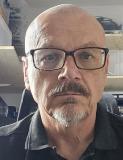Search Results (Searched for: raspberry)
- freylax
- freylax
Today 13:11
Replied by freylax on topic LinuxCNC-RIO - RealtimeIO for LinuxCNC based on FPGA (ICE40 / ECP5)
LinuxCNC-RIO - RealtimeIO for LinuxCNC based on FPGA (ICE40 / ECP5)
Category: Computers and Hardware
- Cooped-Up
- Cooped-Up
31 Dec 2025 14:44
Replied by Cooped-Up on topic CNC Rotary Table with Standalone Controller for Gear Hobbing
CNC Rotary Table with Standalone Controller for Gear Hobbing
Category: Basic Configuration
- NWE
- NWE
24 Dec 2025 05:57
Replied by NWE on topic Linuxcnc Image for Raspberry Pi 3
Linuxcnc Image for Raspberry Pi 3
Category: General LinuxCNC Questions
- NWE
- NWE
24 Dec 2025 05:19
Replied by NWE on topic Linuxcnc Image for Raspberry Pi 3
Linuxcnc Image for Raspberry Pi 3
Category: General LinuxCNC Questions
- NWE
- NWE
24 Dec 2025 04:49
Replied by NWE on topic Linuxcnc Image for Raspberry Pi 3
Linuxcnc Image for Raspberry Pi 3
Category: General LinuxCNC Questions
- NWE
- NWE
24 Dec 2025 04:12
Replied by NWE on topic Linuxcnc Image for Raspberry Pi 3
Linuxcnc Image for Raspberry Pi 3
Category: General LinuxCNC Questions
- NWE
- NWE
23 Dec 2025 15:43
Replied by NWE on topic Linuxcnc Image for Raspberry Pi 3
Linuxcnc Image for Raspberry Pi 3
Category: General LinuxCNC Questions
- NWE
- NWE
20 Dec 2025 22:51 - 23 Dec 2025 19:08
Replied by NWE on topic Linuxcnc Image for Raspberry Pi 3
Linuxcnc Image for Raspberry Pi 3
Category: General LinuxCNC Questions
- unknown
- unknown
20 Dec 2025 11:16
Replied by unknown on topic Linuxcnc Image for Raspberry Pi 3
Linuxcnc Image for Raspberry Pi 3
Category: General LinuxCNC Questions
- unknown
- unknown
20 Dec 2025 11:01 - 20 Dec 2025 11:08
- masawee
- masawee
19 Dec 2025 19:27
Replied by masawee on topic Linuxcnc Image for Raspberry Pi 3
Linuxcnc Image for Raspberry Pi 3
Category: General LinuxCNC Questions
- EdWorks

19 Dec 2025 18:49 - 19 Dec 2025 18:58
- EdWorks

19 Dec 2025 18:48
- EdWorks

19 Dec 2025 18:34 - 19 Dec 2025 18:47
- jaro_p

18 Dec 2025 11:20
Replied by jaro_p on topic Changes in configuration files generated in pncconfig for 7i76 to 7i78
Changes in configuration files generated in pncconfig for 7i76 to 7i78
Category: PnCConf Wizard
Time to create page: 0.380 seconds
